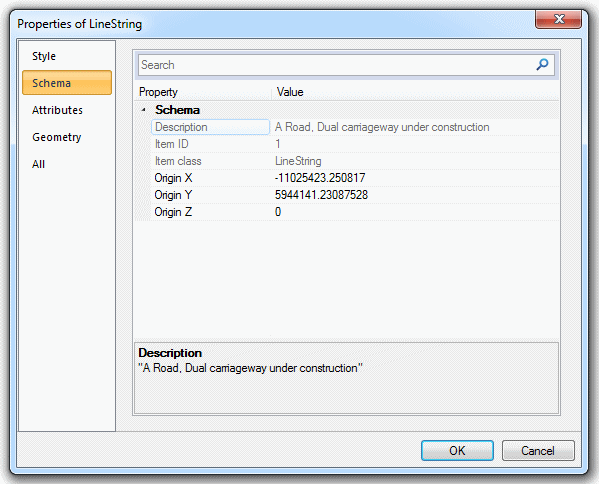
Each overlay has a schema, which is a list of the data columns you wish to appear in the table window and in other parts of the user interface where data is used.
The default schema created in a new overlay is as follows:

Each data column has an expression and a description. An expression can simply be an item’s property, or it can be more complicated, involving mathematical operators, spatial searching functions and database-joins onto named tables. The description can be related to the expression, but can be more meaningful to the user (e.g. Unique ID Number).
The data does not have to exist at the time the schema column is created. If the data does not exist, the table window displays the columns with empty values.
Schemas are also used for:
Schemas are named objects and can be saved in libraries. These can be accessed in the Libraries Control Bar. There is also a Schema tab in the Overlays dialog where you can create and edit a schema for each overlay.
The columns of the overlay schema are used on the Schema tab of Properties dialogs:

When an item is selected, the schema of its overlay is shown.
Table windows get their column setup from the schema of the overlay being viewed.
In the table window, each row is equivalent to an item, and each column comes from the overlay schema. The value in a cell is calculated by evaluating the column expression on the row item.
If the overlay schema does not contain any columns, the table window does not display any rows.
Click to return to www.cadcorp.com
© Copyright 2000-2017 Computer Aided Development Corporation Limited (Cadcorp).